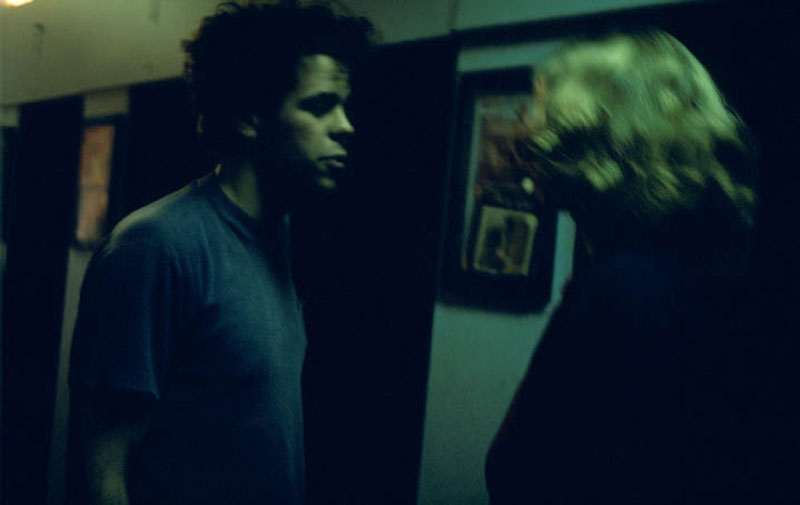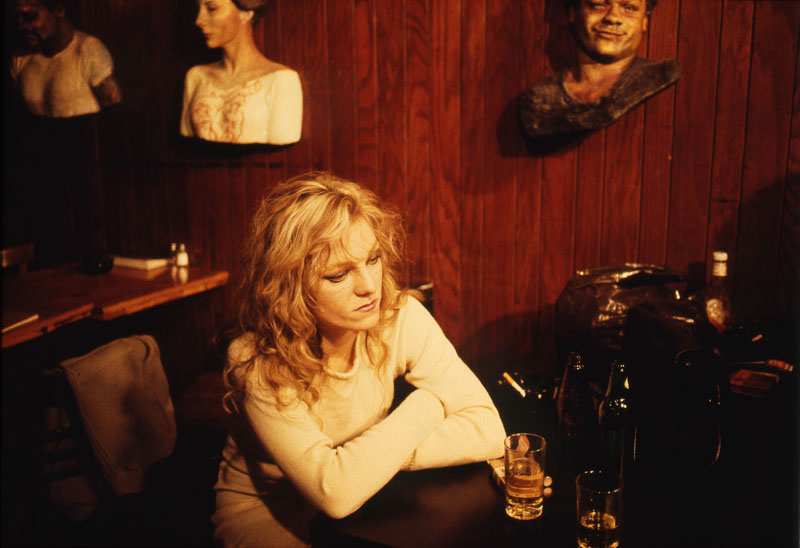
Photographs copyright Nan Goldin 2009 Courtesy Skira Rizzoli New York and photo-eye
Bette Gordon’s famous, perhaps infamous, 1983 independent film Variety evolved from an earlier series of cinematic narrative photographs created by Nan Goldin. A few of the photographs from Goldin’s Variety were incorporated in her earlier opus, The Ballard of Sexual Dependency. This photobook is the first cohesive publication of the entire Variety project.
This staged storyline is not too complex by today’s standard, but for the early 1980’s, it incorporates a dark and sexually risqué theme, challenging the current morals. The story portrays a young woman, Christine, who ventures into the world of pornography, and eventually seeking sexual satisfaction with anonymous partners. It questions the definition of appropriateness of behavior, female sexuality and the accepted norms for a man being equally acceptable for a woman.
The story progresses serially, with Goldin continually shifting the viewer’s orientation, disorienting the frame of reference. We are initially the voyeur, watching as the story unfolds with tight framing, becoming intimately part of the story. Then the frame of reference shifts and we become Christine, seeing through her eyes the shared looks, glances, being observed while assertively observing, being “sized up” and “checked out”. It leaves us unsure if we are the spider or the fly. A quick shift and we are back to observing Christine, then back to being Christine once again. The story finishes with the reader as voyeur and with more questions than answers.
Frequently the lighting within the photographs is low, with deep and mysterious shadows or bathed the in reddish hues of the peep shows, sex shops and porn theaters, a hot and almost liquid, exotic light. These lighting conditions create a level of sexual tension amongst the characters, with some photographs just out of focus or slightly blurred which enhances the feelings of discomfort.
Variety is a bumpy and uneven cinematic narrative, but one that allows for many alternatives. It is not always clear as to how this story is progressing and what the ending might be.
The essay by James Crump’s provides a wonderful external context to frame Goldin’s project in the turmoil of NYC’s Lower East Side and the female “sex wars” evolving in the early 80’s. The embossed hardcover book has a dust cover, and is printed in Singapore.
by Douglas Stockdale






No comments:
Post a Comment